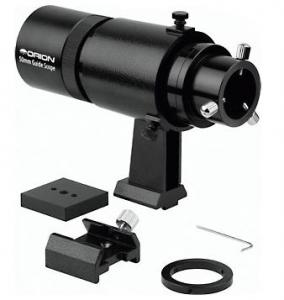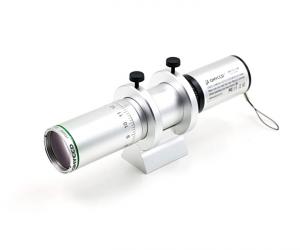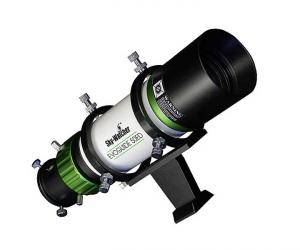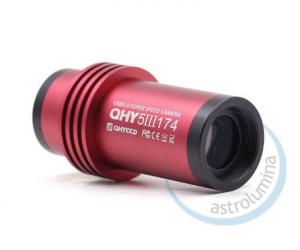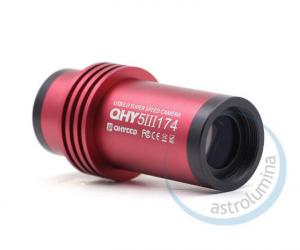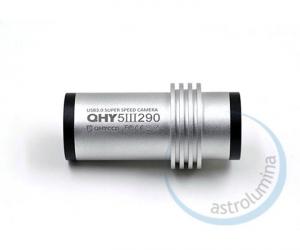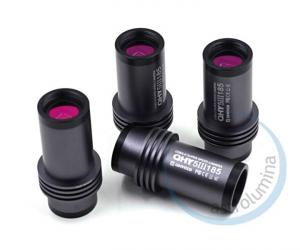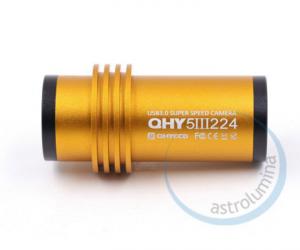- Telescopes
- Overview:
Telescopes - Achromatic Refractor
- Apochromatic Refractor
- Overview:
Apochromatic Refractor - ED Refractor - less color aberration than an achromatic
- SD APO - color free 2-element APO objective
- EDT APO - 3 element ED objective
- High End APO with 3-element APO objective - no color aberation
- Flatfield APO with flat field for Astrophotography
- All Apos and EDs from all manufacturers - large overview
- TS APO and ED from Japan with high quality optics
- Overview:
- Newtonian Telescopes
- Dobsonian Telescopes
- RC Ritchey Chretien Telescopes
- Casssegrain Telescopes
- Reflektor Telescopce with Lens Correcture
- Maksutov Cassegrain Telescopes
- GoTo Telescopes
- Solar Telescopes H-Alpha
- Overview:
- Mounts Tripods Rings Rails Power Supply ...
- Overview:
Mounts Tripods Rings Rails Power Supply ... - Mounts Equatorial with GoTo
- Mounts Equatorial without GoTo
- Mounts Azimutal with GoTo
- Mounts Azimutal without GoTo
- Mounts GoTo - Harmonic Drive
- Travel mounts for astro imaging
- Tripods Piers Polar Wedges
- Mount Control & Electronics
- Dovetail Clamps, Plates and Mount Adapters
- Tube Rings
- Power Supply
- Counterweights Balance Weights
- Mount Accessories - Other
- Overview:
- Telescope Accessories
- Overview:
Telescope Accessories - Eyepieces
- Barlows & Reducer Lenses
- Diagonal Mirrors and Prisms
- Binocular Viewers
- Finder Scopes
- Telescope Collimation and Test
- Cleaning Tools
- Transport and Storage
- Dust protection for Telescopes & Accessories
- Stray Light Protection
- Dewcaps and Heater
- Focusers, Adapters, Motorfocus
- Telescope DIY & Improvement
- Other telescope accessories
- Replacement Parts
- Overview:
- Filters
- Overview:
Filters - Color Filters and Color Filtersets
- Nebular Filters for Visual Observing
- Neutral-Density and Polfilter
- Photo Narrowband Nebular Filters
- Photo Broadband Filters
- Photo Planetary Filters
- Photo R-G-B and IR Cut Filters
- Photo - Filtersets
- Photometric Filters
- Clip Filter for DSLR Cameras
- Filter Wheels and Filterslider
- Solar Filters for white light
- Solarfilter for H-Alpha and Calcium
- Overview:
- Adaptors
- Overview:
Adaptors - Adapter 1,25" and 24,5mm
- Adapter 2"
- Adapter T2 - M42x0.75
- Adapter M48x0,75
- Adapter M54
- Adapter SC
- Adapter M63
- Adapter M68
- Adapter to other Threads
- Adapter Extensions
- Adapter camera bayonet
- Adapter Objective Filterthread
- Adapter Quick Changing , Rotation
- Adapter Eyepiece Projection
- Adapters Tilting
- Overview:
- Astrophotography and Photography
- Overview:
Astrophotography and Photography - Cooled Cameras
- Cameras without Cooling
- Deep-Sky Cameras uncooled
- Set-Offers Camera, Filter, Wheels
- Acessories for Cameras
- Travel mounts for astro imaging
- Imaging Correctors for Telescopes
- Autoguiding Cameras & Sets
- Everything for Guiding
- Focusing aids - Bahtinov mascs
- Flat Field foils and boxes
- Lenses for Cameras
- Piggyback Camera Holder
- Camera Bags, Photocases & more
- Digital Camera and Smartphone Adapter
- Other photo accessories
- Overview:
- Binoculars, Spotting Scopes, Microscopes, Range Finders
- Overview:
Binoculars, Spotting Scopes, Microscopes, Range Finders - Roof Prism Binoculars
- Binoculars with Porro prisms
- Binoculars from 100mm Aperture
- Binoculars with 1,25 inch eyepieces
- TSMX APO Binoculars
- Binoculars for Astronomy
- Binoculars Hiking Bird watching
- Monoculars - Opera Binoculars
- Accessories for Binoculars
- Spotting Scopes
- Range Finders
- Microscopy
- Bags for Phototripods & Binoculars
- Overview:
- Phototripods and Binomounts
- Books, Software
- Overview:
Books, Software - Books for Astronomy Beginners
- Star Charts and Planispheres
- Books about our Solar System
- Observing Tips for Amateurs
- Popular Astronomy Literature
- Teaching material
- Astrophotography books
- Telescopes, Observatories, Construction
- Calendars Yearbooks
- Software, Star Charts
- Books for Microscopers
- Books Nature and Animals
- Nature Photography TimeLapse
- Overview:
- Night Vision, Magnifiers, Weather, Domes & more
- Beginner Astronomy and Gift Ideas
- Second Hand & Special Offers
- New products
Manufacturer: QHY Kameras
Product number: Alccd5III-678
EUR429.00new
EUR 429,00
incl. 19 % VAT (DE)
The VAT indicated refers to that applicable in Germany. After logging in, the VAT amount is adjusted to the applicable VAT of the stored delivery country. Therefore, the final price may vary accordingly.
excl. 6.95 € shipping costs (DE)
more details to the shipping costs ...Please log in to calculate shipping costs to your country.
There are no reviews for this product
- Details..
- Technical data..
- In the box..
- Manufacturer infos..
- Safety informations..
Astrolumina Alccd-QHY 5III 678 - fast monochrome CMOS Camera
The ALccd-QHY 5III 678 is, from the III rock USB3.0 series, the model with the smallest pixels. It is ideal for short focal length optical systems and highest resolution. It is an excellent camera for the solar, lunar, planetary and meteor photography, but also a low-noise and highly sensitive camera for deep sky photography.Sensor and shutter
In the ALccd-QHY 5III 678, the built-in sensor works in "rolling shutter" mode. The STARVIS back-illuminated sensor technology allows the highest sensitivity and quantum efficiency in the visible and infrared range of light.
In this latest generation of sensors, the photodiode portion of the pixel well is physically deeper than in previous sensors, allowing photons of longer wavelengths to penetrate deeper into the substrate. This dramatically increases the sensor´s sensitivity to red and near-infrared (NIR) light. The sensor displays almost equal peak sensitivity to NIR light as it does to light in the visible spectrum.
Body
The housing shape is designed so that the camera, like the proven ALccd-QHY 5-II models, fits into standard 1.25" focusers or adapters. The fins provide for a fast and selective dissipation of the heat which is produced during the exposure.
512 MB DDR3
The QHY5III (Ver. 2) series planetary and guiding cameras are all equipped with a 512 MB DDR3 image buffer which can effectively reduce the pressure on computer transmission, a great help for planetary photography which often requires writing a large amount of data in a short period of time. Some deep-sky astrophotography cameras on the market today only have 256 MB, for example.
In comparison, the 512 MB DDR3 memory of the new 5III (Ver. 2) series cameras represents a significant upgrade.
New Front-end Design with Better Compatibility
QHY5III (Ver. 2) series cameras have adopted a new front-end design with better compatibility. All V2 cams in the future share these features.
The BFL of V2 cam is only 8 mm, which means you can easily compat a V2 cam with your OAG. The basic top adapter includes 1.25 inch threads and you can still use your 1.25 inch filter.
The top adapter glass of V2 can be easily switched. One of the advantage of changeable top glasses is you can use one filter even you´re using a lens! You can add a 1.25inch-cs adapter to connect CS lens, or add a CS-C adapter for C-mount lens. The two adapters are all standard accessories of V2 cams.
USB 3.2 Gen1 Type C Interface
The new QHY5III (Ver.2) series cameras all use the USB3.2 Gen1 Type-C interface. Compared to the USB3.0 Type-B interface used in the previous generation, the Type-C interface has a longer life and is more flexible.
Tips: It is recommended to use the official standard Type-C data cable of QHYCCD. As the market is flooded with a large number of poor-quality Type-C cables, casual use may lead to the camera malfunctioning. If you use your own spare cable, please make sure it is a high-quality cable.
Universal Guiding Interface
The custom interfaces of the previous generation of planetary cameras and guiders has been replaced in the QHY5III (Ver.2) cameras with a more universal ST-4 compatible guiding interface. Now, even if the guiding cable is lost or damaged, you will be able to easily get a replacement on the market at a low cost.
Indicator LED
The new QHY5III (Ver.2) series of cameras is equipped with a status indicator at the back of the camera. If the camera experiences an abnormal status, the multi-colored indicator light will help to determine the situation with different colors signifying different conditions. During normal operation this indicator light is off, so there is no worry about light contaminating the image.
The ALccd-QHY 5III 678 camera is also available as color version. Please contact us.
System requirements
The camera has an advanced electronics that makes a PC with USB 2.0 support necessary. The maximum performance can be reached only with a powerful USB 3.0 computer.
The operating software is Windows 7, 8 and 10 compatible and supported by 32- and 64-bit.
We recommend the ASCOM compatible software packages MSB AstroArt, PHD or MaxIm DL for the Autoguiding. For shooting the freeware SharpCap.
| Type: | Sony IMX678 Exmor CMOS chip, back-illuminated |
| Active pixels: | 3856 * 2180 (8.4 megapixels) |
| Pixel size: | 2.0 µm x 2.0 µm (square pixels) |
| Chip size: | 7.7 x 4.36 mm |
| Quantum efficiency: | approx. 83% |
| Fullwell: | 9 ke- |
| Die: | With microlenses |
| Readout type: | Progressive scan |
| Shutter type: | Rolling |
| Binning: | 1x1 and 2x2 |
| Buffer memory: | 512 MB |
| Data depth integration: | 12 bit |
| Data depth output: | 8 bit / 16 bit |
| Readout noise: | 3.3e @ Gain0, 0.57e @ Gain150 |
| Data transmission: | 43 / 22 frames / second (8 bit /16 bit output) |
| Interface: | USB 3.0 (backwards compatible with USB 2.0) |
| Exposure times: | 11 µs - 900 s |
| Anti-amp control: | yes |
| Cooling: | No cooling |
| Powered: | Via USB cable |
| Autoguider port: | ST-4, integrated (RJ-12) |
| Telescope connection: | 31.7 mm (1 1/4 ") barrel |
| Back focus: | 17 mm with adapter, 8 mm without adapter |
| Optical window: | Multi-coated |
| Dimensions (DxH): | 40 mm x 77.5 mm |
| Weight: | 90 g |
| Manufacturer / Importeur: | Astrolumina Michael Breite |
| Street: | Alfred-Wirth-Straße 12 |
| ZIP / City: | 41812 Erkelenz |
| Country: | Deutschland |
| Telefon number: | +49 2431 9730725 |
| Email: | info@astrolumina.de |
| Website: | www.astrolumina.de |
Safety informations: PDF Download
Recommended accessories
Adaptors
Customers who bought this product also bought...
TS-Optics 50 mm Guiding Scope and Finder Scope with 1.25" Receptacle
EUR 94,90RRP EUR 109,00you save 12.9% (EUR 14,10)
Skywatcher Evoguide 50ED - 50 mm ED Guide and Finder Scope
EUR 259,00RRP EUR 285,00you save 9.1% (EUR 26,00)
Similar Products
Reviews






















